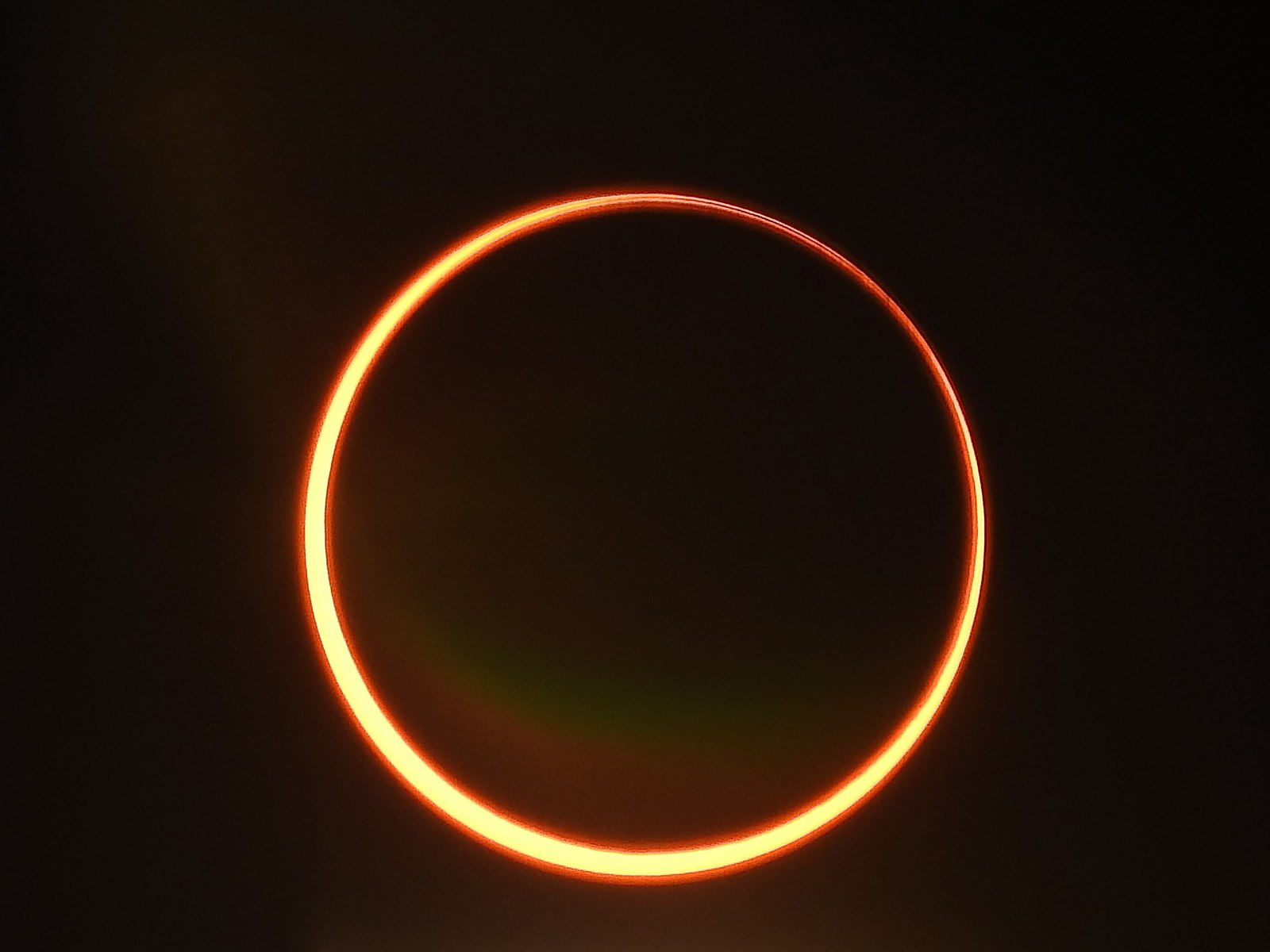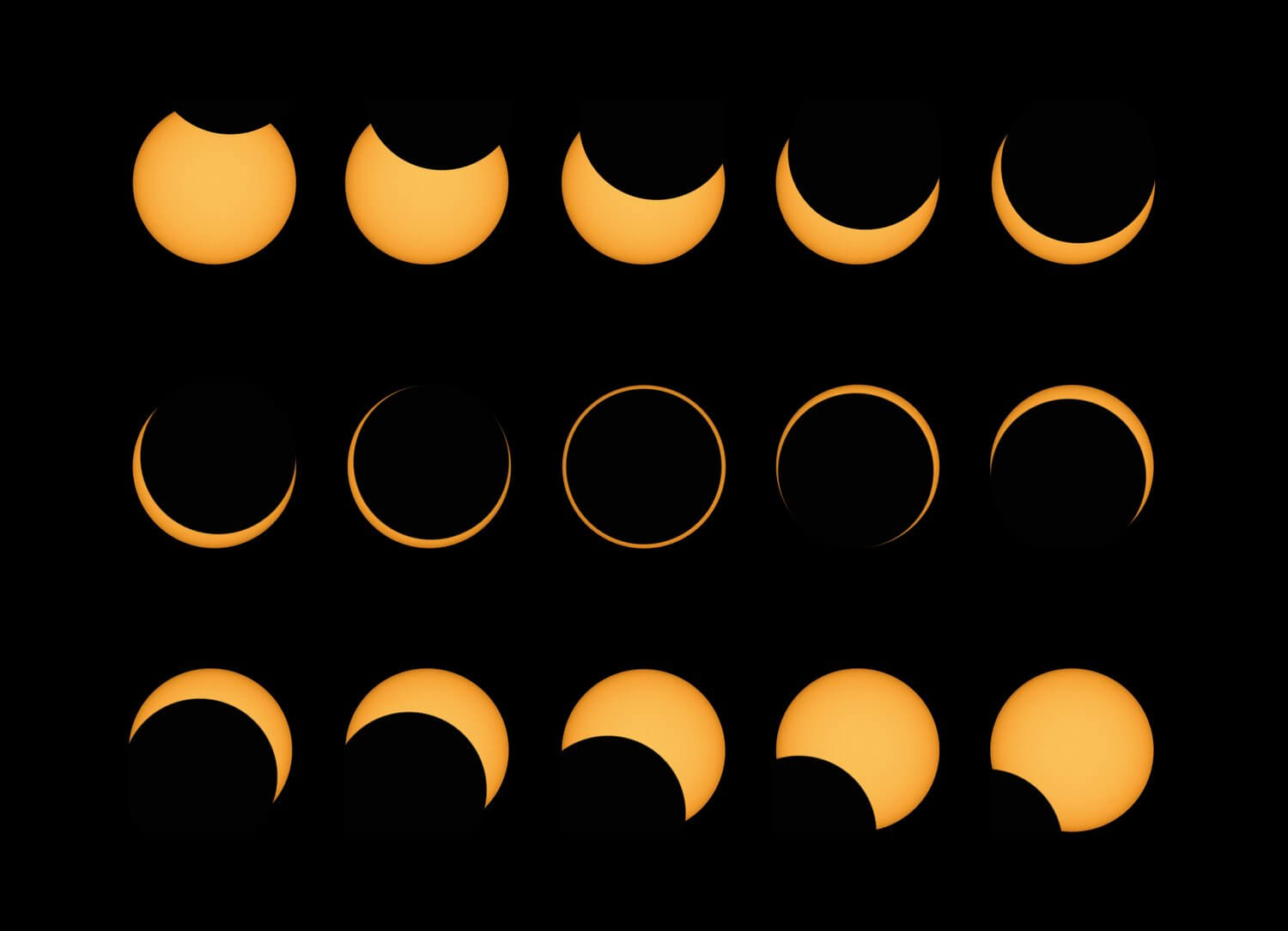The cosmos often treats us to breathtaking celestial events, and among the most captivating is the solar eclipse. While many are familiar with the dramatic total solar eclipse, where the sun is completely obscured, there's another equally mesmerizing phenomenon that creates a stunning "ring of fire" in the sky: the annular solar eclipse. If you've ever wondered what an annular solar eclipse is, how it differs from other eclipses, when and where to witness it, and most importantly, how to observe it safely, you've come to the right place. Let's dive into the fascinating world of annular eclipses and prepare for these rare cosmic shows.
What Exactly is an Annular Solar Eclipse?
An annular solar eclipse occurs when the Moon passes directly between the Earth and the Sun, just like any other solar eclipse. However, there's a crucial difference: the Moon does not completely cover the Sun's disk. Instead, it covers most of the Sun, leaving its outer edge visible as a brilliant, fiery ring around the darkened Moon. This spectacular visual is precisely why it's often referred to as the "ring of fire" phenomenon.
The term "annular" comes from the Latin word "annulus," meaning "ring." During the maximum phase of an annular eclipse, known as "annularity," observers within a specific geographical area will see this perfect ring of sunlight. The area on Earth where you can witness this full "ring of fire" is called the "path of annularity." This path is relatively small, averaging only about 93 miles wide, making it a truly special event for those within its narrow corridor.
Why the Ring of Fire? The Moon's Distance Matters
The key to understanding why an annular eclipse produces a ring, rather than a total blackout, lies in the Moon's orbit. The Moon's path around Earth isn't a perfect circle; it's an ellipse. This means there are times when the Moon is closer to Earth (perigee) and times when it is farther away (apogee).
An annular solar eclipse happens when the Moon passes between the Sun and Earth while it is at or near its farthest point from Earth (apogee). Because the Moon is farther away, it appears slightly smaller in the sky than the Sun. Consequently, it's not quite large enough to completely obscure the Sun's disk, leaving that radiant outer edge visible as the "ring of fire."
Annular vs. Total vs. Partial: Understanding the Differences
Solar eclipses come in a few fascinating varieties, each determined by the precise alignment and distances of the Sun, Moon, and Earth. Understanding their differences helps appreciate the unique beauty of an annular eclipse:
- Total Solar Eclipse: This is arguably the most dramatic. The Moon is closer to Earth and appears large enough to completely block out the Sun's disk, plunging the path of totality into temporary darkness and revealing the Sun's ethereal corona.
- Annular Solar Eclipse: As we've discussed, the Moon is farther away and appears smaller, leading to the "ring of fire" effect. The Sun's bright surface is still visible, albeit as a ring.
- Partial Solar Eclipse: This occurs when the Moon only partially covers the Sun, creating a crescent shape. A partial eclipse is visible over a much wider area than either total or annular eclipses, as it's what most people outside the narrow paths of totality or annularity will see.
- Hybrid Solar Eclipse: A rare phenomenon, a hybrid eclipse can appear as either a total or an annular eclipse depending on the viewer's location along the eclipse path. This happens because the curvature of the Earth brings some locations into the Moon's umbra (total eclipse) and others only into its antumbra (annular eclipse).
Each type offers a unique viewing experience, but the common thread is the Moon's passage between our planet and its star, casting a shadow that delights sky-watchers.
Upcoming Annular Solar Eclipses: Don't Miss the Show!
Annular solar eclipses are uncommon events, occurring roughly every one to two years. Their rarity makes them all the more special. Here are some of the upcoming opportunities to witness the magnificent "ring of fire":
The Great North American Annular Eclipse of October 14, 2023
One of the most anticipated annular eclipses recently crossed North, Central, and South America on October 14, 2023. This event created a stunning path of annularity visible in parts of the United States, Mexico, and many countries across Central and South America. In the morning, for those within the path, the Moon covered the face of the Sun, so that the Sun appeared in the sky as a single ring of light, truly living up to its "ring of fire" moniker.
The Annular Solar Eclipse of October 2, 2024
Looking ahead, the next annular solar eclipse will occur on October 2, 2024. During this event, the Moon will once again block part of the Sun, creating another "ring of fire" in the sky. This particular eclipse will be visible primarily over Easter Island, parts of Argentina and Chile, and a vast stretch of the Pacific Ocean. For those in the right locations, it promises another incredible celestial display.
Future Annular Eclipses (Up to 2030):
- October 14, 2023: North, Central, and South America
- October 2, 2024: Easter Island, Argentina, Chile, Pacific Ocean
- February 17, 2026: Antarctica
- February 6, 2027: Pacific Ocean, South America
- January 26, 2028: Pacific Ocean, North America
- June 1, 2030: Africa, Asia
Safety First: How to Observe an Annular Eclipse
This cannot be stressed enough: safely watching an annular eclipse is paramount. Just like all solar eclipses, it's essential to use proper eye protection or viewing equipment when observing an annular eclipse. Even though the Moon covers a large portion of the Sun, the visible outer edge is still incredibly bright and dangerous. Looking directly at the Sun, even for a brief moment, without proper protection can cause severe and permanent eye damage, including blindness.
Here's what you need to know:
- Use Certified Solar Eclipse Glasses: These are not regular sunglasses. They are specially designed filters that meet the ISO 12312-2 international safety standard. Ensure yours are from a reputable manufacturer.
- Never Use Unsafe Filters: Do not use regular sunglasses, smoked glass, exposed film, or any other makeshift filter. They do not offer adequate protection.
- Indirect Viewing Methods: If you don't have eclipse glasses, you can use indirect viewing methods like a pinhole projector, which projects an image of the eclipsed Sun onto a surface.
- Supervise Children: Always supervise children when they are observing an eclipse to ensure they are using proper eye protection.
- Check Your Equipment: Before use, inspect your solar eclipse glasses or viewers for any scratches, punctures, or damage. Discard them if they are compromised.
Remember, even a small portion of the Sun's surface that is not covered by the Moon can be dangerously bright to the unprotected eye. Your vision is precious, so prioritize safety above all else.
Beyond the Spectacle: Why Annular Eclipses Matter
While primarily a stunning visual treat for us on Earth, annular solar eclipses also hold scientific importance. They provide unique opportunities for scientists to study the Sun's atmosphere and space weather. Organizations like NOAA (National Oceanic and Atmospheric Administration) use specialized instruments such as coronagraphs and satellites to observe the Sun's corona (its outermost atmosphere) and its effects on Earth during these events. Although an annular eclipse doesn't reveal the full corona as a total eclipse does, it still offers valuable data points for understanding our star's dynamic behavior and its influence on our planet's technological infrastructure and environment.
In Summary
An annular solar eclipse is a magnificent celestial event where the Moon passes between the Sun and Earth, appearing smaller than the Sun and creating a brilliant "ring of fire." This phenomenon occurs because the Moon is at its farthest point from Earth during the eclipse. Unlike a total eclipse where the Sun is completely obscured, an annular eclipse leaves a visible ring of sunlight, making it a distinct and equally captivating experience. Upcoming events like the October 2, 2024 eclipse offer exciting opportunities to witness this rare spectacle. Regardless of when or where you observe an annular eclipse, remember that proper eye protection, such as certified solar eclipse glasses, is absolutely essential to ensure a safe and unforgettable viewing experience. So, mark your calendars, prepare your viewing equipment, and get ready to be amazed by the cosmos' incredible artistry!



Detail Author:
- Name : Halie Crooks
- Username : treva15
- Email : hand.ferne@hotmail.com
- Birthdate : 1974-12-27
- Address : 619 Maurine Ports Apt. 506 Anastasiamouth, NM 28829
- Phone : +1-678-786-6064
- Company : Hackett Group
- Job : Medical Records Technician
- Bio : Dignissimos possimus voluptatem beatae eum cum asperiores. Unde sit fugit illo quos nihil. Maxime natus excepturi aliquam corporis. Eligendi suscipit aut sapiente voluptas.
Socials
instagram:
- url : https://instagram.com/thalia_mcglynn
- username : thalia_mcglynn
- bio : Laborum sit rerum quia qui voluptas. Rem sequi alias quos aut non quasi.
- followers : 3940
- following : 2761
tiktok:
- url : https://tiktok.com/@mcglynnt
- username : mcglynnt
- bio : Nostrum laborum dolore molestiae ducimus.
- followers : 3111
- following : 60
linkedin:
- url : https://linkedin.com/in/thalia_id
- username : thalia_id
- bio : Ut ipsam neque qui et et molestiae molestiae nam.
- followers : 6907
- following : 2315